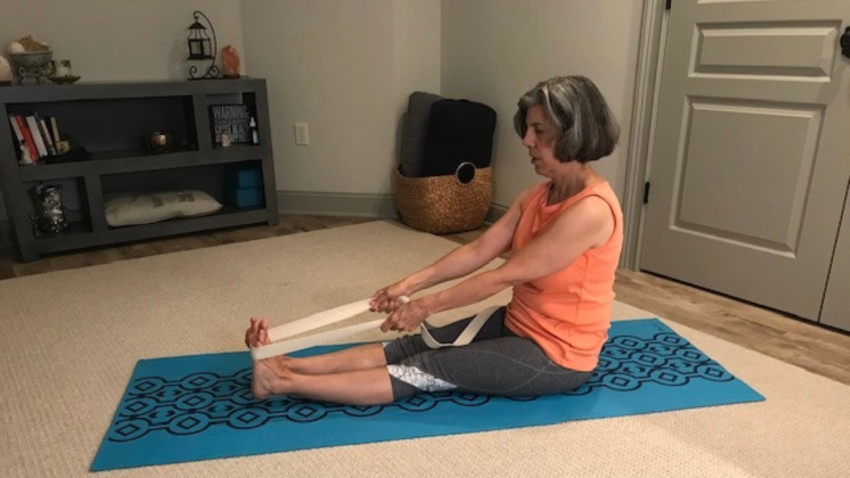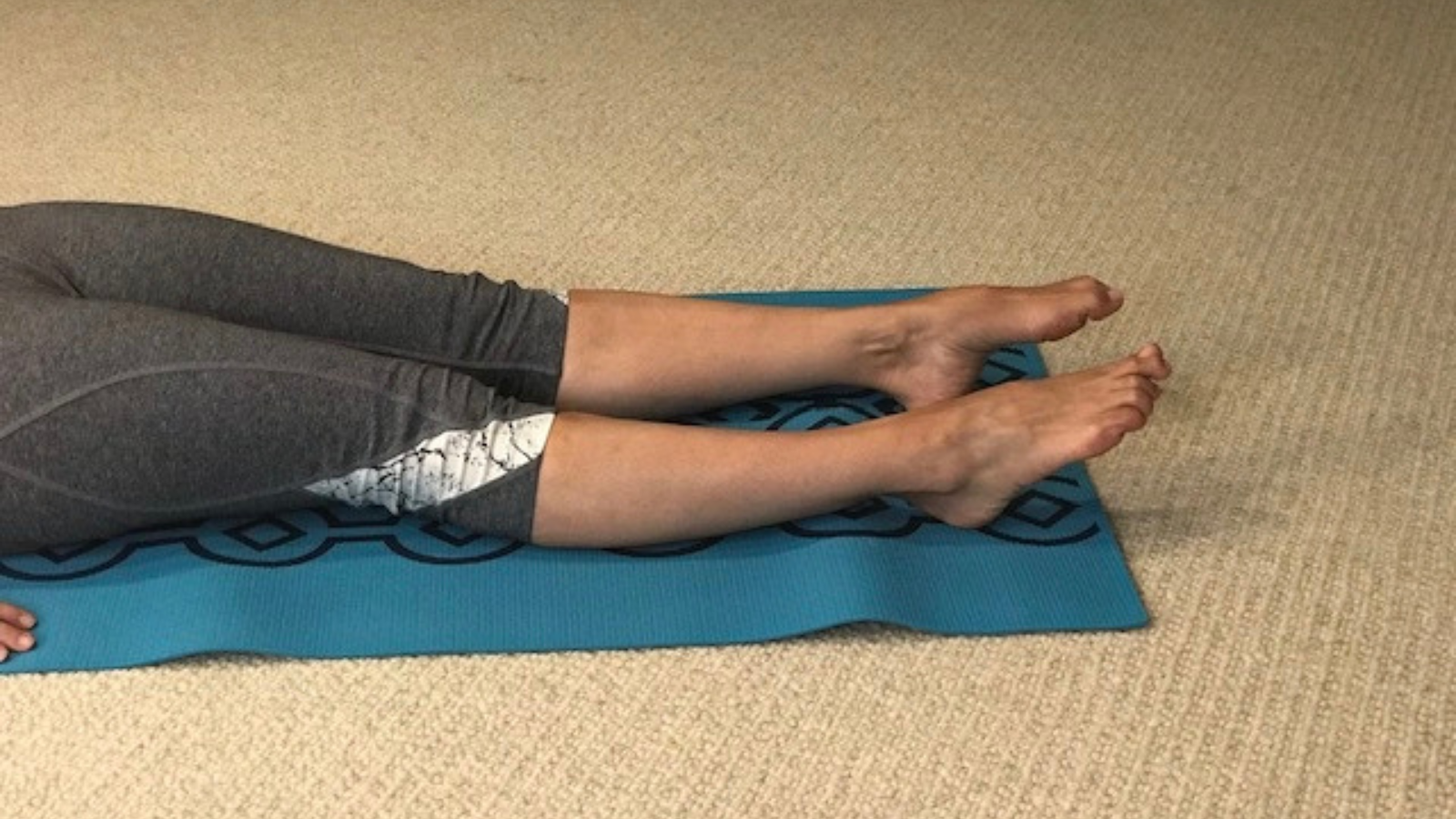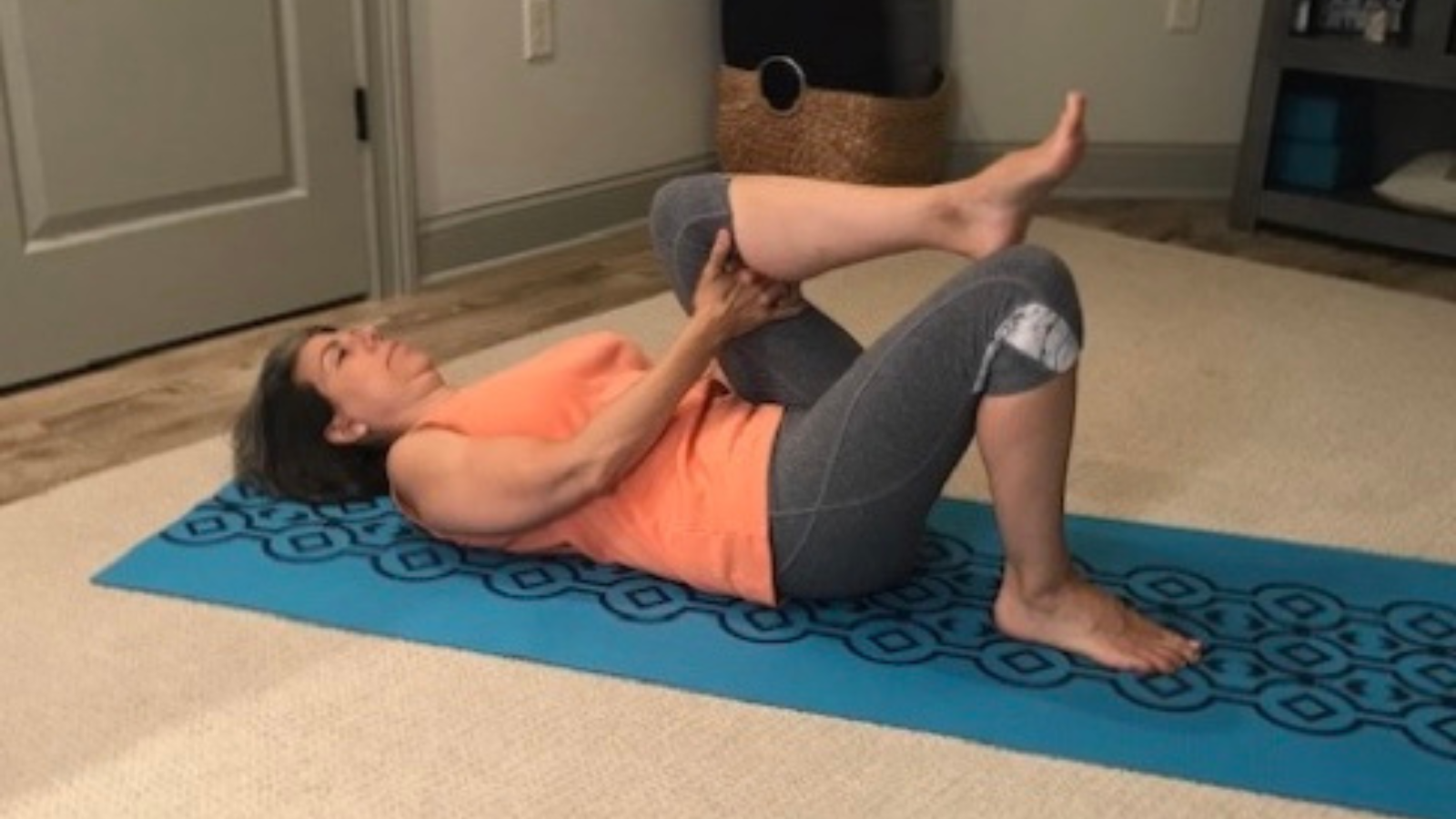View basket (0 items $0.00)

Plantar Fasciitis: Yoga for Aching Feet
I remember the morning I started to get out of bed and was in excruciating pain as soon as I tried to stand. When the pain persisted over several weeks, I headed to my local podiatrist, who diagnosed me with plantar fasciitis.
Plantar fasciitis is a painful inflammation or micro-tearing of the soft tissue along the foot's arch. This tissue, or plantar fascia, is a thick, web-like ligament that connects your heel to the front of your foot. It acts as a shock absorber and supports the arch of your foot, helping you walk.
Causes of Plantar Fasciitis
One of the most common orthopedic complaints, plantar fasciitis, affects one-in-ten adults between the ages of 40 and 60. The pain typically starts in front of the heel on the big toe side of the foot, but without treatment, eventually spreads into the arch. It can be caused by several things:
-
overstretching and overuse
-
structural factors, such as very high arches, flat feet, tight calves and hamstrings
-
pregnancy
-
being overweight or obese
-
standing or running on hard surfaces for extended periods of time
-
wearing shoes with soft soles and poor arch support
Overwhelmingly, poorly fitting or worn footwear is the culprit. Simply changing your shoes to ones that are more supportive can go a long way to easing your pain. Your doctor may also prescribe inserts for your shoes, night splints, and/or exercises, among other treatments.
Daily Tips for Relieving Plantar Fasciitis
In addition to your doctor’s recommendations, try sleeping with the bedclothes loose around your feet and ankles. This prevents the feet from pointing down, a position that shortens the plantar fascia and Achilles tendon. Additionally, keep a water bottle in your freezer and use it to roll the soles of your feet several times a day. The cold will reduce inflammation and help ease discomfort.
Since plantar fasciitis pain is most debilitating first thing in the morning, let’s look at some exercises you can do before your feet ever hit the floor. Setting aside time to do a few yoga stretches before getting out of bed in the morning can ease the pain of plantar fasciitis.
Foot and Ankle Warmups for Plantar Fasciitis
-
Lying in bed, start by wiggling your toes. This helps to bring circulation to your feet.

-
Next, warm up your toes and ankles by flexing your toes toward you on an inhalation and pointing them away as you exhale. Repeat 3 to 5 times, spreading the toes wide as you flex.

3. Then, draw slow circles with your feet to loosen the ankles further. After several circles in one direction, switch and repeat in the opposite direction.
Reclining Hand-to-Foot Pose (Supta Padangusthasana)
Tightness in the hamstrings and calves contributes to plantar fasciitis pain. Stretching along the whole fascia chain, from the back of the thigh down into the heel and foot, can bring relief.
-
Still lying on your back, bend both knees and place your feet flat on the bed a few inches away from your sitting bones.

-
Exhaling, bring your right knee into your chest, interlacing your hands around the back of the thigh.
-
As you inhale, straighten the right knee to stretch your foot toward the ceiling. Press the sole of your foot to the sky.
-
Exhale, bending the knee back toward the chest.
-
Repeat 3 to 6 times.

-
Next, keeping the right leg extended toward the ceiling, point and flex your foot 2 to 3 times. Move slowly, especially if there is tension in the back of your calf and thigh.
-
Then, using your hands as resistance, press the back of the thigh into your interlaced hands as you continue to draw your toes towards your face.
-
Hold this stretch for 2 to 3 breaths. Release and repeat once or twice more.
-
Bend your knee back into your chest and then place your ankle on your left thigh. Take a breath or two before moving on to the next exercise.
Toe Pull from Thread-the-Needle Pose (Urdhva Mukha Pasasana)
This exercise works to stretch the plantar fascia, the longest part of which connects to the big toe. You can practice it sitting in a chair as well, with one ankle crossed over the opposite knee.
-
With your left ankle crossed over your right knee, flex your left foot slightly, so the sole of the foot is pointing away from you.
-
Rest your right hand on the right thigh to keep it stable, and with your left hand, grasp the toes of the left foot.
-
As you inhale, draw the toes back toward your left knee.
-
Exhale and move the toes toward the heel of the left foot.
-
Repeat this several times.
-
Release and repeat both the hamstring stretch and big toe pull on the opposite foot.
Calf Stretch from Staff Pose (Dandasana)
This stretch helps to release tension in the calf and Achilles tendon which often accompany plantar fasciitis. You’ll need a yoga strap, towel or a bathrobe tie for this exercise.
-
Sitting up in your bed with the legs extended in front of you, bring the strap around the ball of your right foot. Hold one end of the strap in each hand.
-
Gently pull both ends of the strap toward you, drawing your toes toward your face, until you feel a stretch in the calf muscle.
-
Hold for 30 to 45 seconds, release, and then repeat twice.
-
Pause before repeating with the left foot.
Yogic Foot Massage for Plantar Fasciitis
You may want to do this massage at night, too, to soothe tired feet.
-
Come to sit on the edge of the bed. Bring your right ankle to rest on your right thigh just above the knee.
-
Use both thumbs to push along the length of your sole, moving from the heel to your toes and then back. Work in a line toward your big toe, paying particular attention to your inner arch.

-
Repeat, moving up and down the foot in a line to each toe for 1 to 2 minutes.
-
Then, place both thumbs in the middle of your foot. At the same time, pull each thumb toward the outer edge of your foot, widening the sole. Do this several times, moving to other areas of your foot and pulling your thumbs to each side.

-
Finally, holding the front of your foot with your right hand, use the knuckles of your left hand to briskly rub all over the right sole for 30 seconds to one minute. Pay particular attention to the base of the toes, instep, and heel.
-
Repeat with the opposite foot.
-
When finished, slowly come to standing. Pause and notice how your feet feel. You may still have some discomfort, but it should be mild enough for you to now be able to walk.
Reprinted with permission from Wisdom Tree Yoga.

Beverly Davis-Baird, MA, C-IAYT, is a New Jersey-based yoga therapist, writer, and educator. She specializes in making yoga accessible for adults 50+, offering classes and workshops for back care, arthritis, bone health, balance, posture, and healthy aging. An educator at heart with over 20 years of experience as a public school teacher, Beverly brings her knowledge of individual learning styles to her classes, providing instruction that is clear, concise, inclusive, and compassionate. Bringing over 30 years of experience and training, she considers herself a lifelong learner and believes that the practice of yoga should bring spaciousness and release from tension, not create it. As such, she strives to make yoga accessible to people of differing abilities, believing the real benefits of yoga come from what is taken with you outside of class and into your life. To read her blog or learn more about her teaching schedule and latest offerings, please visit www.wisdomtreeyoga.com.
Featured Courses









